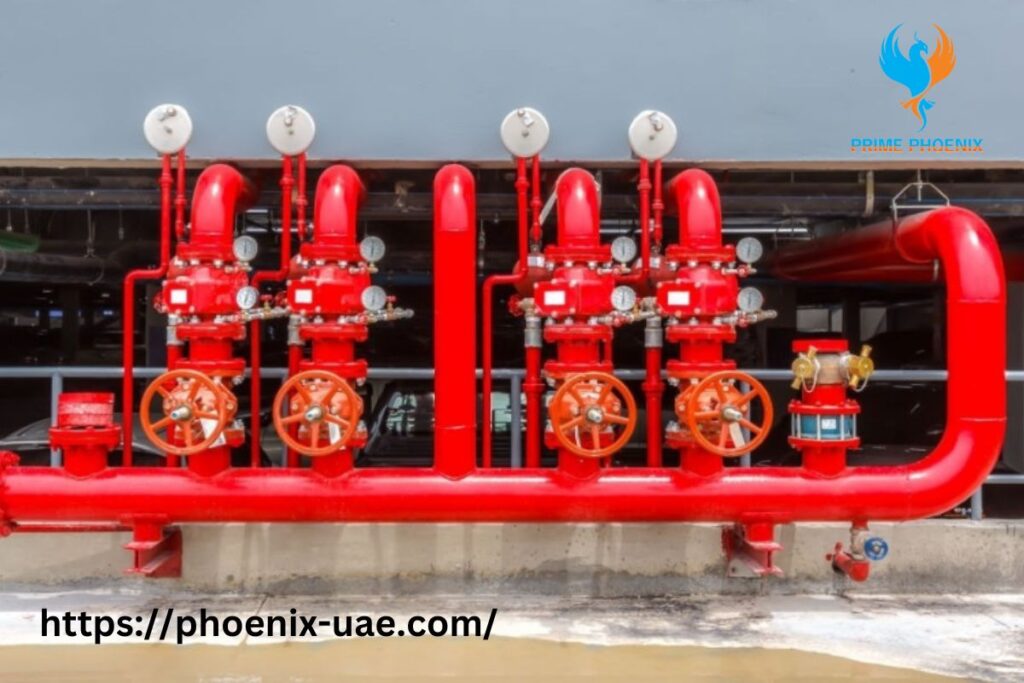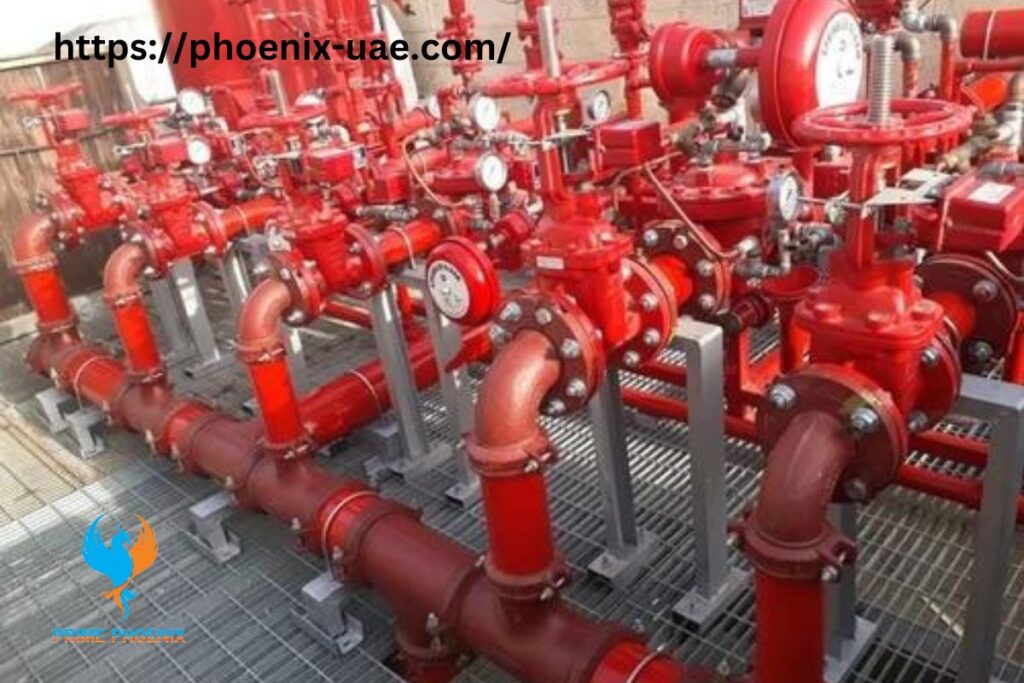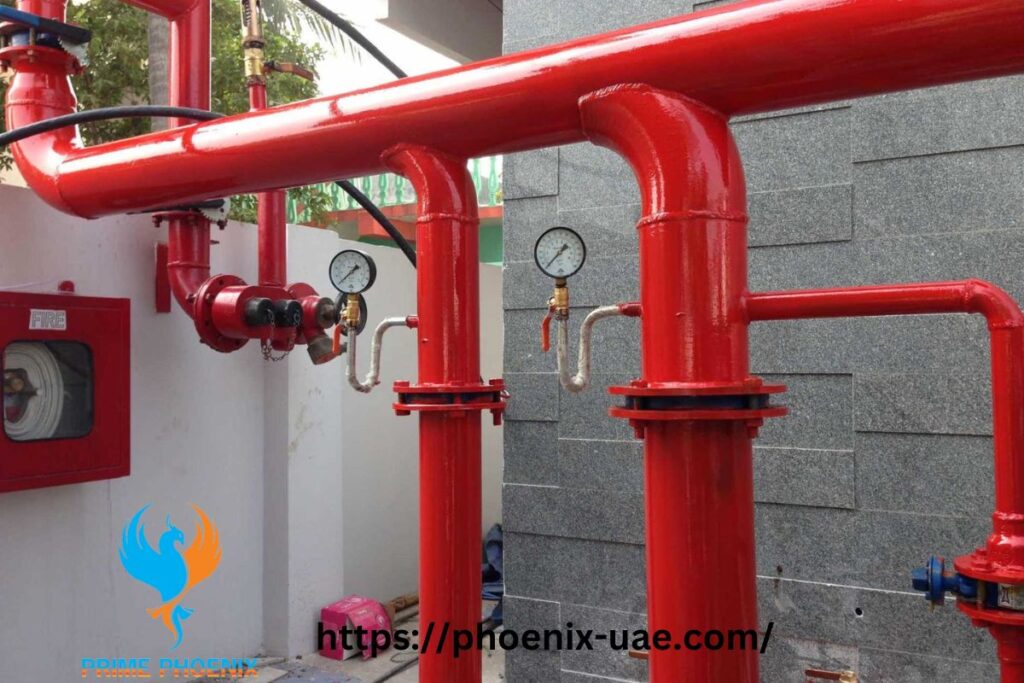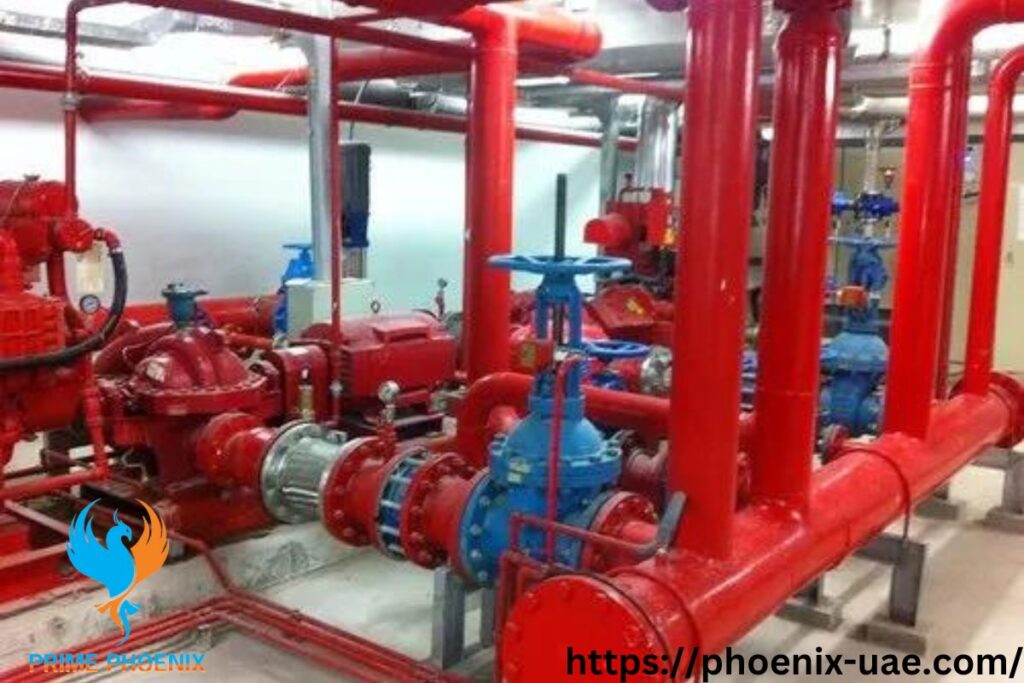- Ras Al Khor Industrial Area 2
- +971 4 330 2170
Fire hydrant systems are a critical component of fire protection infrastructure. This comprehensive guide will provide an in-depth look at what fire hydrant systems are, how they work, their components, installation and maintenance, and their vital role in firefighting operations.

A fire hydrant system is an underground piping system that is connected to a reliable water supply and has aboveground hydrant access points located at optimal intervals along streets and roadways. The system allows firefighters to access large volumes of water quickly when responding to fires.
Fire hydrant systems provide rapid on-demand water supply for fire suppression efforts even if sections of a building should collapse in a fire. Having readily available water in abundance is crucial for controlling and extinguishing fires before they can spread. Hydrant systems are designed to deliver a minimum of 250 gallons per minute at the standard minimum pressure of 20 psi for effective firefighting.
According to the National Fire Protection Association (NFPA), the primary purpose of a fire hydrant system is to provide adequate, reliable water supply for:
- Suppressing structure fires
- Protecting properties in developed areas
- Providing water for fire department use
Well-designed hydrant systems are a key element of the fire protection plan for municipalities, buildings, and public areas. They equip firefighters to act swiftly to save lives and property when fire emergencies occur.
Major Components of Fire Hydrant Systems
Fire hydrant systems consist of a number of important components working together to deliver adequate water flow and pressure for firefighting whenever needed:
- Wet Barrel Hydrants: The standard aboveground hydrant that always has water in its barrel for instant access. These have a single valve for quick activation.
- Dry Barrel Hydrants: Used in areas with freezing temperatures, the main valve is below frost level to prevent freezing. A dry barrel has two valves – one below the frost line and one at the hydrant.
- Water Supply: This includes water mains, tanks, reservoirs, lakes, etc that feed water to the system. Reliable supply is needed to maintain pressure.
- Pipes: Underground water mains, lateral lines, and lead pipes distribute water to the hydrants under pressure. Galvanized iron or PVC pipes are commonly used.
- Gate Valves: These valves control water supply to each hydrant and allow firefighters to access water from specific points.
- Fire Hydrant Pumps: Boost water pressure as needed to meet firefighting demands. Electric and diesel pumps are used for reliability.
- Connections: The hydrant barrel connects to the lateral pipe and water main to receive water.
Installation Guidelines and Approvals
Proper installation of fire hydrants follows codes and standards published by organizations like the National Building Code of India (NBC) and National Fire Protection Association (NFPA). Local fire authorities also review and approve fire hydrant system plans for a building or locality.
Some key guidelines per NFPA include:

- Minimum water flow of 250 gallons per minute for each hydrant.
- Optimal spacing between hydrants of no more than 300 feet in populated areas.
- Consistent coloring based on flow capacity – red for 1500+ gpm, orange for 1000-1499 gpm, etc.
Regular inspection, testing, and maintenance are also critical for ongoing functionality. Hydrants should be flushed annually, flow tested every 5 years, repaired when damaged, and kept visible and accessible.
Operation and Maintenance
For reliable operation during emergencies, fire hydrant systems require ongoing maintenance and testing. This includes:
- Inspections: Annual visual inspections to check for damage and obstructions. Flow testing every 5 years to measure water output.
- Flushing: Periodic flushing of hydrant barrels and piping to remove sediment and corrosion debris.
- Repairs: Fixing leaking or damaged valves, hydrants, and other components. Replacing worn parts.
- Accessibility: Ensuring hydrants have reflective markers and remain accessible without obstructions. Removing rust, snow, plants, and debris regularly.
- Standby pumps are also installed to maintain system pressure:
- Jockey pump: Handles small leaks and pressure fluctuations. Starts automatically when the pressure drops below a set point.
- Main pump: Activates automatically when significant pressure drop occurs due to major flows. Restores full system pressure.
Having backup pumps and power supplies increases reliability if water supply is disrupted.

Using Hydrants During Firefighting
When responding to a fire, the fire engine connects supply hoses to the hydrant outlet using fittings like a storz connector. The hydrant’s main valve is fully open to allow maximum water flow from the hydrant to reach the fire.
The fire engine’s powerful pumps are engaged to boost the water pressure to the level needed to power fire hose streams. This provides a virtually unlimited supply of pressurized water to suppress the fire.
Each hydrant can supply hundreds of gallons per minute. This high-volume water source enables firefighters to aggressively attack fires and prevent them from spreading. Fire hydrants are an indispensable tool for fire departments.
Properly designed, installed, and maintained fire hydrant systems save lives and property by providing reliable high-volume water supply for fighting fires in buildings and populated areas. They allow rapid, effective response to mitigate fires quickly before extensive damage can occur.

Frequently Asked Questions About Fire Hydrant Systems
Q: How does water remains in the fire hydrant barrel?
A: The water supply provides continuous pressure that fills the underground piping system. This pressure keeps the hydrant barrel filled at all times.
Q: What is the difference between a dry barrel and wet barrel hydrant?
A: Wet barrel hydrants have water-filled barrels for instant access to water. Dry barrel hydrants have a drainage system to allow the barrel to drain – used in freezing climates to prevent freezing.
Q: How often should fire hydrants be inspected?
A: NFPA recommends inspecting hydrants at least annually for damage, obstructions, leaks, etc. Flow testing should be done at 5 year intervals.
Q: What should be done to make hydrants more visible?
A: Hydrants should be painted in high-visibility colors based on their flow capacity. Reflective markers should also be placed on roads to indicate hydrant locations.
Q: Who is responsible for maintaining hydrants?
A: The local municipality or water authority usually handles hydrant maintenance and repairs. Building owners must ensure hydrants on their property remain accessible and in good repair.
Q: What is the proper way to open a fire hydrant?
A: Use a hydrant wrench to open the valve slowly and completely to allow full water flow. Opening too quickly can cause pressure drops and water hammering.
Q: How can I prevent hydrants from freezing in winter?
A: Avoid piling snow around the hydrant barrel. Place insulation wraps or dome covers over the barrel if temperatures drop below freezing.
Q: How do fire trucks connect to fire hydrants?
A: They use hoses with special fittings like Storz connectors that securely couple to the hydrant outlet to handle the high water pressure.
